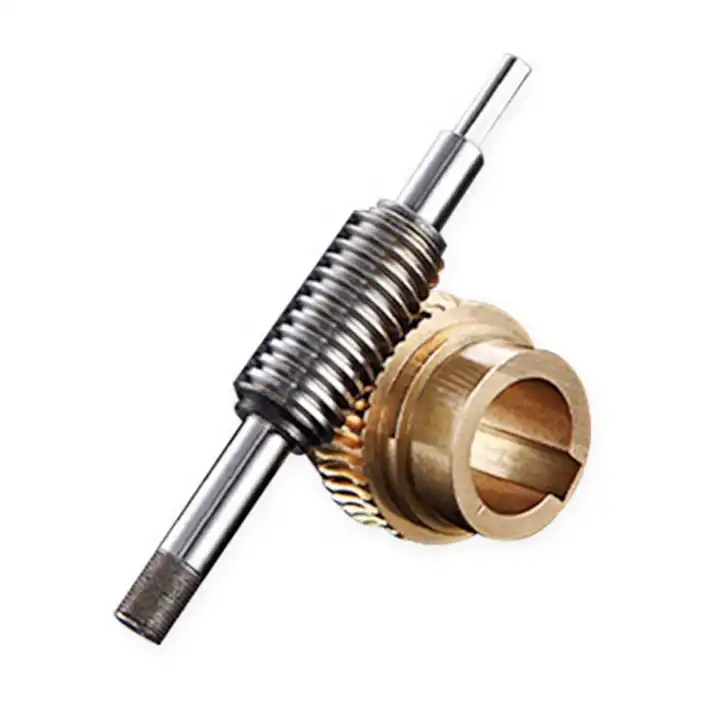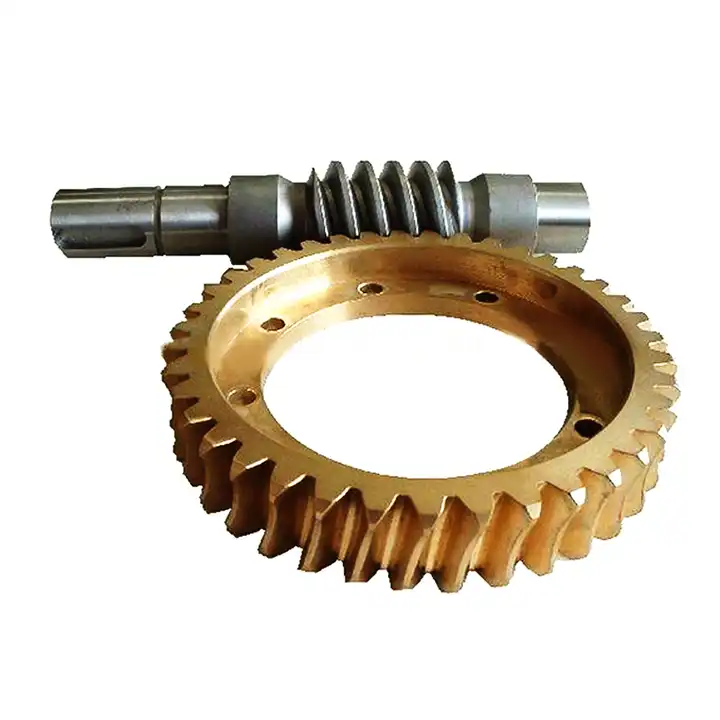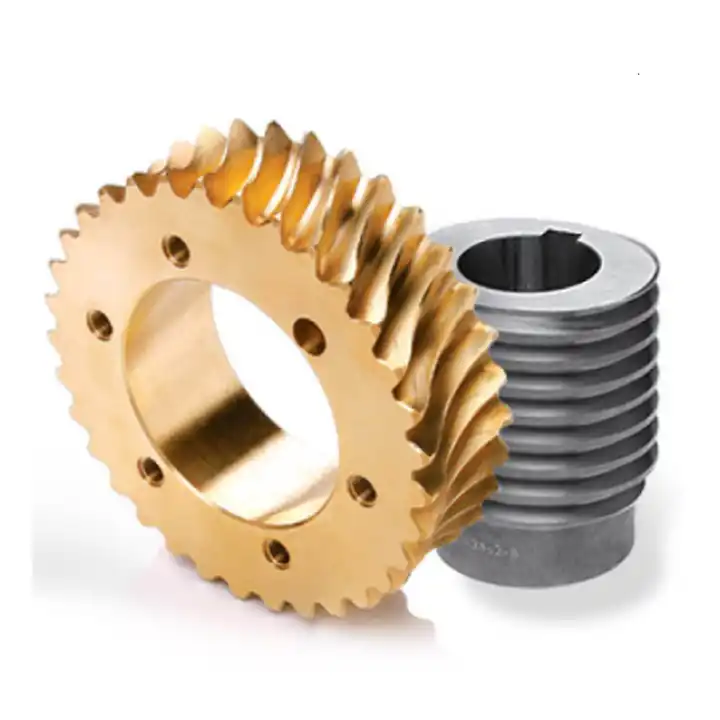A worm wheel, also known as a worm gear or worm gear wheel, is a type of mechanical gear system that meshes with a worm to provide high torque and high reduction ratios in a compact design. The worm wheel typically has teeth that are perpendicular to the worm’s axis, while the worm has a helical thread that wraps around the shaft. This arrangement allows the worm wheel to transmit high torque and handle high loads while remaining stationary.
Worm Wheel Advantage
High torque
Worm gears can provide very high torque, which makes them ideal for applications where a lot of force is required.
Low speed
Worm gears can also provide very low speeds, which is useful for applications where precise control of the speed is needed.
Self-locking
Worm gears are typically self-locking, which means that they will not turn in the opposite direction unless they are actively being driven. This makes them ideal for applications where the load must be held in place even when the power is turned off.
Application of Worm Wheel
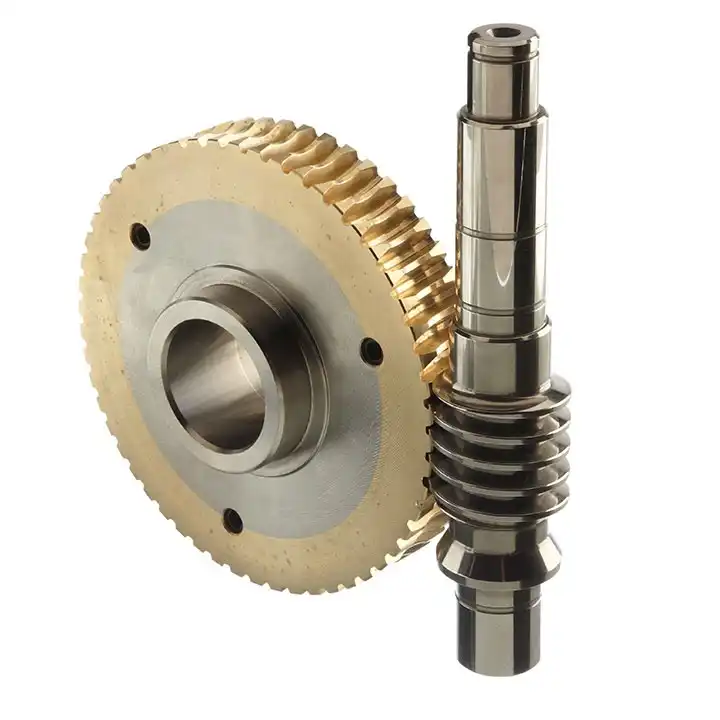
Hoisting and lifting equipment: Worm gears are often used in hoists and winches because they can provide high torque and self-locking capability. This makes them ideal for applications where the load must be held in place even when the power is turned off.
Machine tools: Worm gears are used in many machine tools, such as lathes, milling machines, and drill presses. They provide high torque and low speeds, which are ideal for these types of applications.
Conveyors: Worm gears are used in conveyors to reduce the speed of the conveyor belt. This allows the belt to move more smoothly and evenly, and it also helps to prevent the belt from slipping.
Instruments: Worm gears are used in many musical instruments, such as guitars, violins, and banjos. They are used to control the pitch of the strings, and they also help to provide a smooth, consistent feel when tuning the instrument.
Power steering systems: Worm gears are used in power steering systems to provide a smooth and precise steering feel.
Wind turbines: Worm gears are used in wind turbines to reduce the speed of the turbine blades. This helps to protect the blades from damage and also allows the turbine to generate more power.
Automotive steering systems: Worm gears are used in the steering mechanism of many vehicles. They provide a smooth and precise feel when turning the steering wheel, and they also help to lock the steering wheel in place when the vehicle is parked.
Medical equipment: Worm gears are used in some medical equipment, such as hospital beds and examination tables. They allow the equipment to be moved smoothly and precisely, and they also help to prevent the equipment from moving unexpectedly.
Worm Wheel For Sale
-
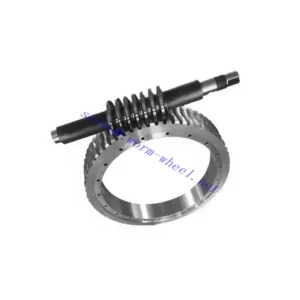
Custom Small Planetary Gear Wheel Worm
-
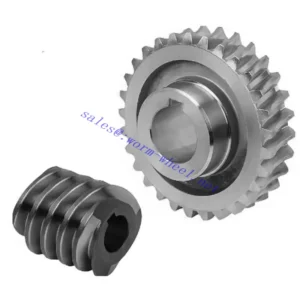
Custom Spiral Bevel Helical Worm Wheel Planetary Steel Metal Spur Gears Toothed Gear Rack And Pinion
-
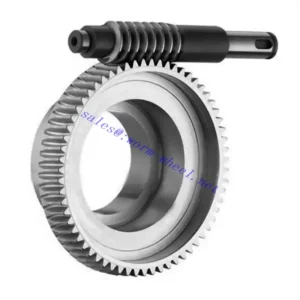
Factory Manufactured Steel Worm Wheels
-
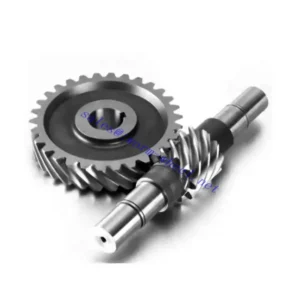
Forging Worm Gear Screw Shaft Coupling And Worms Wheels
-
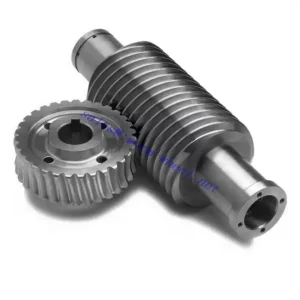
Nylon Elevator Worm Wheel Gear
-
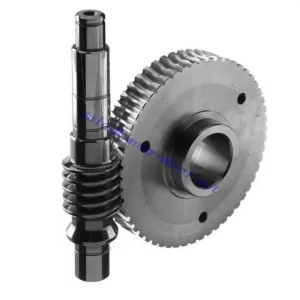
Skew Pinion Gears Double Spiral Bevel Gear Set Worm Wheel and Shaft Gear customization
Frequently Asked Questions
How To Maintain The Worm Wheel ?
Lubricate regularly: Worm gears require regular lubrication to prevent wear and tear. The type of lubricant used will depend on the operating conditions and the type of worm gear.
Inspect regularly: Visual inspections of the worm gear and the worm wheel should be conducted regularly to check for signs of wear or damage. Any damage should be addressed promptly to prevent further damage.
Clean and inspect seals: The seals on worm gears should be cleaned and inspected regularly to make sure that they are not leaking. Leaking seals can cause premature wear and damage to the worm gear.
Replace worn parts: Worn parts on worm gears should be replaced promptly to prevent further damage.
Keep the environment clean: The environment around the worm gear should be kept clean to prevent dirt and debris from entering the gear housing. Dirt and debris can cause premature wear and damage to the worm gear.
How an Worm Wheel works?
A worm wheel is a gear that meshes with a worm gear. The worm gear is a screw-shaped shaft, and the worm wheel has teeth that are angled to match the screw threads. When the worm gear rotates, it drives the worm wheel, which in turn rotates at a lower speed.
The worm gear and worm wheel work together to provide a high torque and low-speed transmission. The high torque is due to the fact that the worm gear has a large number of threads, which creates a large amount of friction between the worm gear and the worm wheel. The low speed is due to the fact that the worm wheel has a much larger diameter than the worm gear.
Worm Wheel Design
The design of a worm wheel is important to ensure that it performs its intended function effectively. Some of the factors that need to be considered when designing a worm wheel include:
The type of worm gear: The type of worm gear will determine the design of the worm wheel. For example, a single-thread worm gear will require a different design than a double-thread worm gear.
The speed ratio: The speed ratio between the worm gear and the worm wheel will also affect the design. A higher speed ratio will require a larger worm wheel.
The load: The load that the worm wheel will be subjected to will also affect the design. A heavier load will require a stronger worm wheel.
The materials: The materials used for the worm gear and the worm wheel will also affect the design. For example, a worm gear made of steel will require a worm wheel made of a softer material, such as bronze or brass.
Custom Design
As a service to our customers, we offer extensive manufacturing experience and talent to meet the special needs of custom parts. Our in-house engineering team has extensive experience in designing and custom engineering solutions to meet your requirements. If you don’t see what you’re looking for in our standard range, please inquire about custom options.
